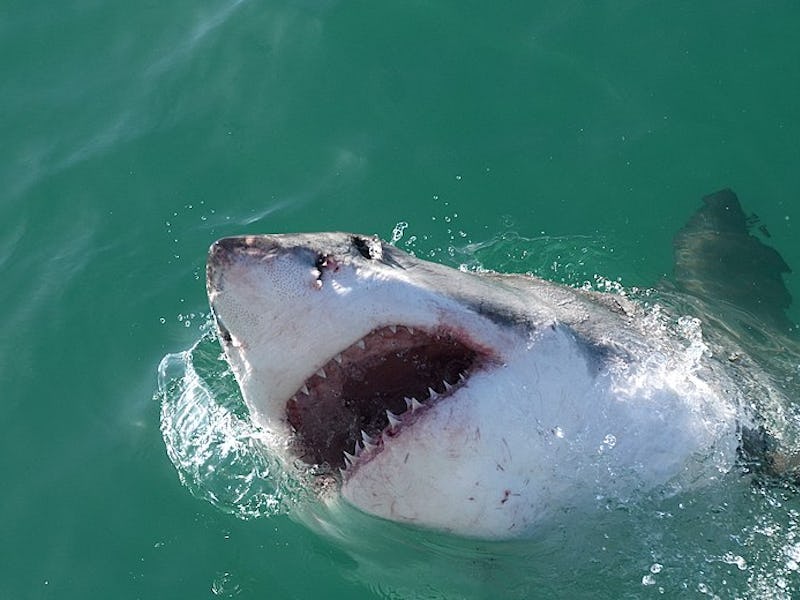Marine Biologists Determine a New Method for Locating Great White Sharks
In a few years, lifeguards might do the same.

To figure out where a shark is, you either have to tag it or see it. Because most sharks are not tagged, scientists and lifeguards alike use drones to survey the ocean for a sight of a shark — but at most sites, observation conditions can be poor and the shark movement too unpredictable. To remedy this, scientists have developed a new way to locate sharks, using DNA.
In a study released recently in Frontiers in Marine Science researchers explain that environmental DNA, or eDNA, is the genetic material collected from an environment that has to do with a living organism, but isn’t directly being sourced from it.
These researchers focus on great white sharks, so scanning for their eDNA means searching for genetic signatures parsed out in the ocean from things like their mucus, feces, or shed skin.
While eDNA isn’t a new concept, these scientists developed a new species-specific genetic analysis that can reliably be used to determine if a great white shark frequents a certain beach.
Related video: Diving with sharks in Stuart Cove in the Bahamas.
The scientists suspect that in the near future, the reliability and portability of this method will allow for its widespread application. One of the goals, co-author and USGS ecologist Kevin Lafferty, Ph.D. says, is that one day a lifeguard can walk to the shore, scoop up some water, and tell with this genetic kit if a great white shark has been around.
For now, it’s in its proof of concept phase: Co-author and California State University, Long Beach professor Christopher Lowe, Ph.D. tells Inverse that “realistically we’re looking at a few years before we’re at that level.”
A great white shark swims.
That’s because a few important details need to be worked out next. While this team was able to determine and design specific genetic markers from great white shark tissues, then successfully match those genes to water samples taken from where great whites hang out, the approach only gives a rough idea of where sharks are at a particular moment. Now they need to find out how long the DNA actually stays near the location of the shark — with changing currents and the possibility that UV light breaks down the samples, it’s currently unclear whether the shark was in that spot a minute ago or a day ago.
What scientists can do with this methodology in its current form is add it to their current arsenal of shark surveying tech, like drones, tags, and acoustic receivers. Lowe describes it as a “new exciting tool in the toolbox” — by sampling regions for eDNA scientists like Lowe will have a better idea of what areas of research to focus on during their research.
“It adds another level of surveillance that we just didn’t have before,” says Lowe. “We can get a more complete picture of who is out there.”
While great white shark populations had declined due to overfishing, there is now growing evidence that their population is beginning to recover. For example, Southern California beaches have slowly become a nursery habitat for juvenile white sharks, which typically live along beaches during the summer and fall months.
Marine biologists now want to gain a better understanding of where they consistently live to both protect the sharks and people, a need that elevates the importance of this great white shark monitoring tool. In a few years when the technology is more advanced and less expensive, it’s possible that ocean surface vehicles monitoring for sharks can send word to the beach if they ever come across a big teethed fish in the deep.